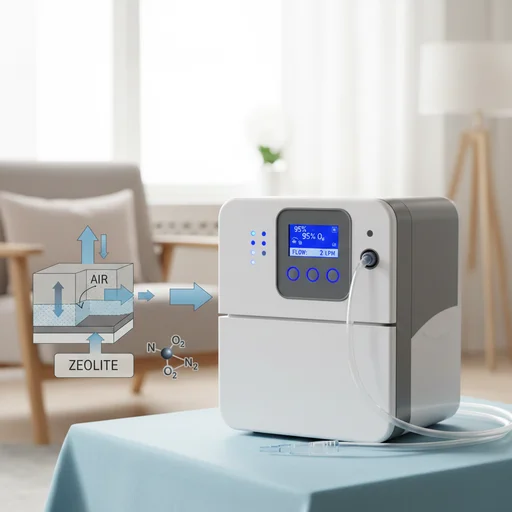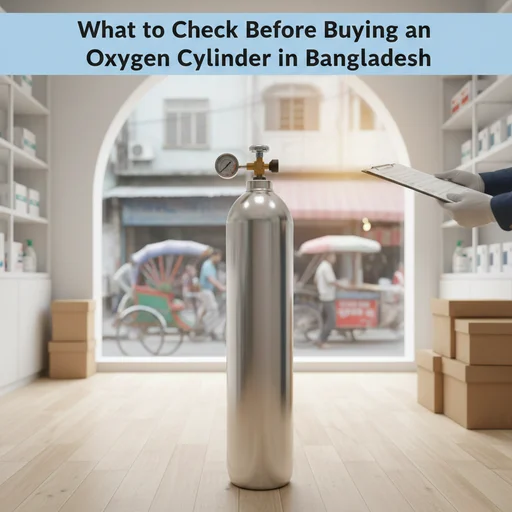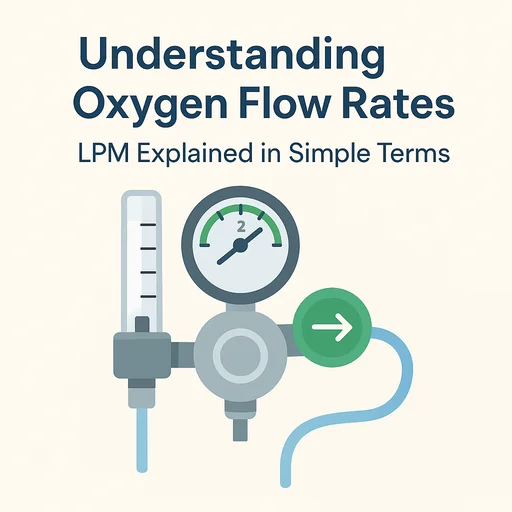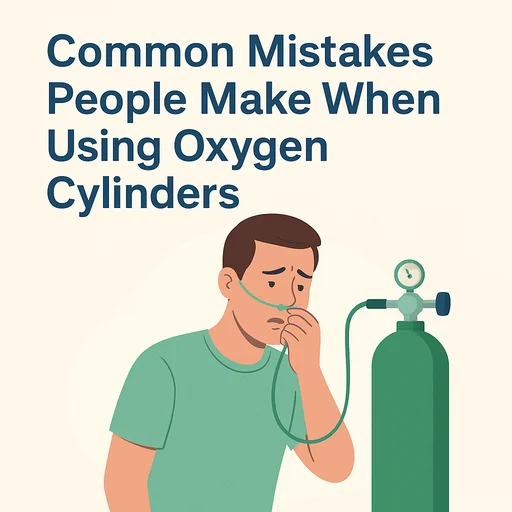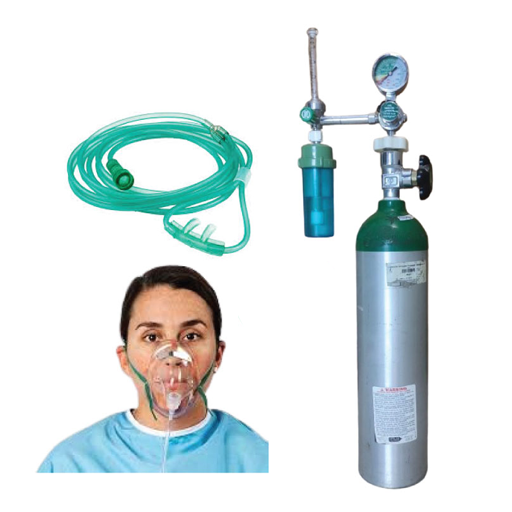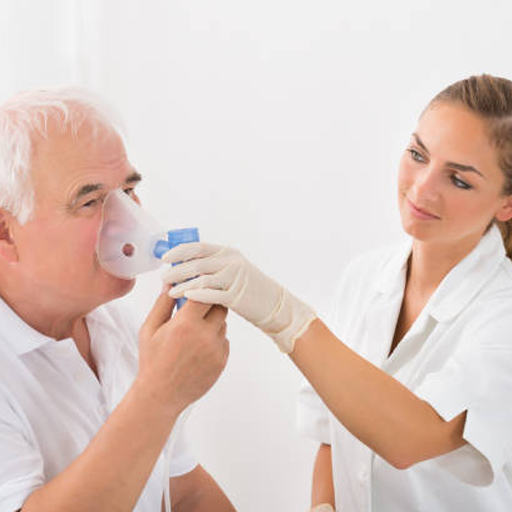You’ve probably seen them in hospitals. Maybe you’ve heard about them from family or friends dealing with respiratory issues. Those humming machines sitting quietly by bedsides or being wheeled through corridors.
But have you ever stopped to think about what’s actually happening inside an oxygen concentrator?
It’s not storing oxygen. It’s not pulling it from some hidden tank. It’s doing something far more interesting… It’s creating it. Right there in your room. From the air you’re already breathing.
Let’s break down exactly how these machines pull off this bit of medical engineering magic.
What Exactly Is an Oxygen Concentrator?
Think of an oxygen concentrator as a very selective air filter. But instead of just removing dust or particles, it removes nitrogen.
The air around us contains roughly 21% oxygen and 78% nitrogen. For most people, that’s plenty. But for those with respiratory conditions like COPD, pneumonia, or chronic bronchitis, their lungs struggle to absorb enough oxygen from that 21%.
An oxygen concentrator separates nitrogen from the surrounding air, allowing patients to breathe up to 95% pure oxygen. That’s a massive jump from the standard 21% we normally inhale.
These devices come in two main varieties. Stationary units for home use, typically weighing around 22 pounds with wheels for easy movement. And portable models that weigh between 2 to 20 pounds, designed for people who need oxygen therapy on the go.
No heavy cylinders to lug around. No waiting for refills. Just plug it in (or charge the battery) and breathe.
The Science Behind the Magic: Pressure Swing Adsorption
Here’s where things get technical. But stay with me.
Most medical oxygen concentrators use something called Pressure Swing Adsorption, or PSA for short. This technology uses a molecular sieve to adsorb gases through rapid pressure swing adsorption of atmospheric nitrogen onto zeolite minerals at high pressure.
Zeolite. That’s the star of the show.
Under high pressure, gases become trapped onto solid surfaces in a process called adsorption, and when pressure drops, the gas releases or desorbs. Zeolites are crystalline materials with evenly sized pores and tunnel systems that have an incredibly large surface area. We’re talking hundreds of square meters per gram.
The key property? Zeolites attract nitrogen far more strongly than oxygen. In fact, they can adsorb about twice as much nitrogen as oxygen because of how nitrogen molecules interact with the zeolite’s structure.
This selectivity is what makes the entire oxygen concentrator work.
The Four-Stage Cycle: How It Actually Happens
Picture this happening inside your concentrator every few seconds:
Stage 1: Compression and Pressurization
An air compressor pulls room air into the machine. This compressed air, still containing its usual mix of nitrogen and oxygen, gets forced into the first cylinder filled with zeolite pellets.
The pressure builds. Typically between 4 to 8 bar.
Stage 2: Adsorption (The Nitrogen Gets Trapped)
As compressed air passes through the zeolite bed at high pressure, something happens. The zeolite material adsorbs nitrogen from the air, leaving behind oxygen-enriched gas that continues through to the product tank.
Think of it like a sponge that only soaks up nitrogen molecules. The oxygen? It just passes right through.
Stage 3: Product Delivery
The concentrated oxygen (now 90-95% pure) collects in a product tank. From there, it flows through plastic tubing to reach a nasal cannula or mask that delivers it to the patient.
Stage 4: Regeneration and Pressure Equalization
Meanwhile, remember that first cylinder filled with nitrogen-saturated zeolite? It needs to be cleaned for the next cycle.
The pressure drops in the first bed, causing the zeolite to release the adsorbed nitrogen back into the atmosphere. The nitrogen gets vented out. The zeolite refreshes itself.
Here’s the clever part: most concentrators have two cylinders. While one is in the adsorption phase (trapping nitrogen), the other is regenerating (releasing nitrogen). They alternate. Back and forth. Continuously.
That’s how these machines can deliver a steady stream of oxygen without ever stopping.
Continuous Flow vs. Pulse Dose: Two Different Delivery Methods
Not all oxygen concentrators deliver oxygen the same way.
Continuous flow machines provide a steady stream of oxygen, regardless of whether you’re inhaling or exhaling. These are typically the larger, stationary units you’d use at home. They can generate anywhere from 0.5 to 15 liters per minute, depending on the model.
Pulse dose (or demand flow) systems are smarter about power consumption. They deliver oxygen only when the patient inhales, making them more efficient and suitable for portable concentrators.
This is why portable units can run on batteries. They’re not constantly pumping out oxygen. They’re waiting for you to breathe in, then delivering a burst of concentrated oxygen at precisely the right moment.
One caveat, though: pulse dose concentrators aren’t always recommended for nighttime use. Why? Because they rely on detecting your breathing patterns. When you’re sleeping, your breathing becomes shallower and less regular, which can confuse the sensor.
Real-World Performance: What to Expect
So what kind of oxygen purity can you actually get from these machines?
Most oxygen concentrators deliver oxygen concentrations of 90% or higher, with typical flow rates ranging from 0.5 to 5 liters per minute for low-flow concentrators. At the same time, high-flow models can produce up to 10 liters per minute.
For medical use, that 90-95% purity is more than enough. Patients with conditions like COPD, cystic fibrosis, or sleep apnea see significant improvements in their blood oxygen levels when using these devices.
Recent research even suggests that newer designs could potentially reduce the amount of adsorbent material needed by a factor of three while increasing oxygen recovery by 10-20% compared to typical commercial units. That means lighter machines and better efficiency.
The Practical Side: Using Your Concentrator at Home
If you’re using a home oxygen concentrator from Marium Oxygen, setup is straightforward.
First, position the unit at least a foot or two away from walls and furniture. These machines need proper airflow to work efficiently. Then plug it into a power outlet. Most stationary units need to stay plugged in continuously to function.
Some users add a humidifier bottle filled with distilled water to the oxygen outlet. Why? Because breathing concentrated oxygen for extended periods can dry out your nasal passages. The humidifier adds moisture back.
Attach your nasal cannula or face mask. Adjust the tubing for comfort. You can extend the tubing up to 50 feet if needed, though watch out for tripping hazards.
Your doctor will prescribe a specific flow rate measured in liters per minute. Don’t adjust this setting without consulting them first. Your prescription exists for a reason.
As for maintenance? Wash your nasal cannula or face mask weekly with mild dish soap and warm water. Clean them more frequently when you’re sick. Replace the tubing if it gets damaged. That’s about it.
Power Consumption and Backup Plans
One common question: “Will this drive up my electricity bill?”
It depends on the type. Stationary concentrators run constantly on wall power, so yes, they’ll add to your electric bill. Some power companies offer discounts for customers using medical equipment, so it’s worth asking.
Portable units are more efficient since they’re smaller and can run on rechargeable batteries. Battery life varies widely depending on your flow rate and breathing pattern, typically lasting anywhere from 2 to 13 hours.
But here’s something critical: always have a backup plan. Power outages happen. You’ll need a battery backup or power generator in case of an electrical outage.
Many users keep a small oxygen cylinder on hand as an emergency backup. At Marium Oxygen, we offer 24/7 support and fast delivery within 60 minutes inside Dhaka city for emergencies like this.
Beyond Home Use: Portable Freedom
The development of portable oxygen concentrators has genuinely changed lives.
Before these devices, people needing oxygen therapy were essentially tethered to their homes. Leaving meant arranging for heavy oxygen tanks, coordinating delivery schedules, and worrying about running out.
Since the early 2000s, manufacturers have produced portable concentrators that typically deliver one to five liters per minute using pulse flow technology. They fit in a bag you can carry or sling over your shoulder. Some come with carts and wheels.
The FAA has approved many portable concentrator models for use on commercial airlines. That’s right. You can fly with your oxygen concentrator. Check with your specific airline beforehand, but the option exists.
This mobility means people can maintain active lifestyles, travel, visit family, and generally live without being confined by their medical condition.
Safety Advantages Over Traditional Oxygen Cylinders
There’s another reason oxygen concentrators have become the preferred choice over cylinders.
Safety.
Traditional high-pressure oxygen cylinders, while effective, carry risks. If ruptured or leaking, they can cause or accelerate combustion in a fire. The pressurized oxygen itself becomes a hazard.
Oxygen concentrators, by contrast, pose no such danger. They’re not storing pressurized oxygen. They’re making it on demand from ambient air. There’s no risk of rupture or explosive decompression.
They’re also more economical over time. No need for regular refills or delivery fees. No rental costs for cylinders. Just electricity (or battery power) and occasional filter replacements.
For healthcare facilities and home users in Bangladesh, where reliable oxygen supply can sometimes be challenging, having a concentrator means independence. At Marium Oxygen, we’re a government-approved supplier providing both sales and rental options, along with 24/7 customer support to ensure you’re never without the oxygen you need.
The Future of Oxygen Concentration Technology
Research into oxygen concentration technology continues.
Scientists are experimenting with different zeolite formulations. LiLSX zeolite, for instance, has shown superior performance compared to traditional options, potentially producing higher oxygen purity at greater flow rates.
There’s also work on “flexible” oxygen concentrators that could automatically adjust purity and flow rate based on real-time monitoring of a patient’s blood oxygen levels. Imagine a system that senses when your oxygen saturation drops and immediately increases output. That’s the direction things are heading.
Miniaturization continues too—lighter, more efficient, longer-lasting batteries. Quieter operation. Lower power consumption.
These aren’t just incremental improvements. They’re meaningful changes that directly impact the quality of life for people who depend on oxygen therapy.
Making the Right Choice for Your Needs
If you’re considering an oxygen concentrator, work closely with your doctor. They’ll assess your specific oxygen requirements, activity level, and lifestyle to recommend the right type.
Some people need stationary units for nighttime use paired with portable units for daytime activities. Others manage fine with just one type.
At Marium Oxygen, we carry a complete range of medical equipment beyond just oxygen concentrators. From hospital beds and wheelchairs to CPAP machines and pulse oximeters, we’re a comprehensive medical equipment supplier serving healthcare professionals and individuals throughout the Dhaka division.
We understand that when you need oxygen, you need it now. That’s why we offer free, fast delivery, cash-on-delivery options, and installation support from our delivery partners.
The Final Thought
An oxygen concentrator works by doing something straightforward in principle but sophisticated in execution.
It takes ordinary air. Compresses it. Passes it through zeolite beds that preferentially grab nitrogen molecules. Releases the oxygen-rich air that remains. Repeats this cycle continuously, several times per minute, providing a steady supply of medical-grade oxygen.
No magic. Just clever engineering taking advantage of molecular properties and pressure dynamics.
For the millions of people worldwide who depend on supplemental oxygen to breathe comfortably, these machines aren’t just medical devices. They’re lifelines. Tools for independence. Tickets to maintaining active, fulfilling lives despite respiratory challenges.
And honestly? That makes understanding how they work pretty worthwhile.
Need an oxygen concentrator or have questions about oxygen therapy equipment? Contact Marium Oxygen for expert guidance. We’re available 24/7 to provide government-approved, high-quality medical equipment throughout Bangladesh. Call us for emergency oxygen needs or to discuss which equipment best suits your situation.

